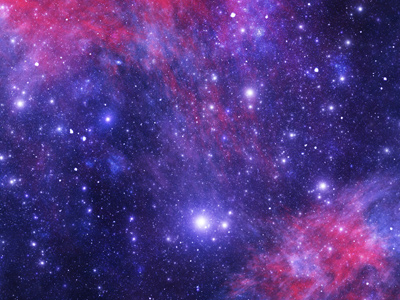Fission requires a neutron to set off the chain reaction. For fusion to occur, large amounts of energy are required to trigger it. That is one of the biggest difficulties for the scientists trying to make fusion work. The other difficulty is that the fuel for nuclear fusion is hydrogen at high temperatures, and that makes it extremely hard to handle.
The reason that it takes such high energies is that the nuclei are positively-charged and they will repel each other. Electrostatic repulsion is very strong for atomic scale objects that are very close together. Scientists have managed to get fusion reactions to work - but only in the hydrogen bomb which needs the energy of a small nuclear explosion to set it off.
The nuclear fusion process that releases energy inside of a star converts hydrogen nuclei into helium nuclei. A star starts off life as a large cloud of gas (in space, that is mainly hydrogen) and dust. Slowly, over millions or even thousands of millions of years, gravity causes the gas cloud to collapse in on itself. As you know, when you compress a gas, its temperature increases. On the scale of a star, even a small one like the Sun (it is classified as a yellow dwarf star), this can reach several million degrees Celsius. According to the kinetic theory, at such high temperatures, the nuclei of hydrogen will be moving around at extremely high speeds therefore the collisions will be high energy. If the collisions have sufficient energy, hydrogen nuclei will stick together (fuse) to form the isotopes of hydrogen called duterium and tritium. These isotopes then fuse to form helium nuclei. The actual process is more complex than this but, happily for you, you don't need to know the full details in senior high school.
All of the naturally-occurring elements in the world around us have been created by nuclear fusion. When stars have used up their stocks of hydrogen fuel, they begin to use helium instead. You may have heard of red giant stars - they are powered by this type of nuclear fusion. The products of helium fusion are the elements up to and including iron, depending on the size of the star. This will happen to our Sun in about five thousand million years. When the helium is used up, nuclear fusion stops. For small stars like the Sun, they will just shrink to form a white dwarf star which will then gradually lose its heat into space to become a black dwarf - a dead star that no longer shines. For stars that are a lot larger than the Sun, the story is very different. When fusion stops, they collapse in on themselves very rapidly, which heats up the gasses to an unbelievably high temperature. This triggers an explosion called a supernova and it is the energy from this explosion that creates the final nuclear fusion of a star's life. In it, there is sufficient energy for the nuclei of the elements in the star to fuse, forming the rest of the elements, which are scattered through space.








